How Walkable Is Your Neighborhood?
If part of your financial independence strategy is pursuing geoarbitrage or if you anticipate moving after achieving FI, where you move matters. Walkable neighborhoods have experienced a resurgence in popularity in recent years.
More and more people are realizing the detrimental effects of car dependency on their bank accounts, stress levels, and overall health.
But is your neighborhood walkable? What exactly does “walkable” mean and how can you find out? I’ve got you covered.
It’s easy to think of walkability as simply the ability to walk down your street or walk your dog around the block. But do you even have sidewalks on your street? Many don’t, forcing you to walk in the road and become more vulnerable to distracted drivers.
But walkability in a broader sense means the ability to walk to things, like grocery stores and libraries. The more you can do the things required to live your life without a car, the more walkable your neighborhood is.
- People who live in neighborhoods with sidewalks are 47 percent more likely to be active at least 39 minutes a day.
- A well-constructed walkway for a typical 50-foot-wide residential property might cost a builder $2,000, but it can return 15 times that investment in resale value.
- In a scenario where two houses are nearly identical, the one with a five-foot-wide sidewalk and two street trees not only sells for $4,000 to $34,000 more but it also sells in less time.
- Retail properties with a Walk Score ranking of 80 out of 100 were valued 54 percent higher than properties with a Walk Score of 20 and had an increase in net operating income of 42 percent for more walkable properties.
The folks at WalkScore.com mentioned above have been the leader in this space and use a methodology they developed with leading academics to score neighborhoods. Their brief description:
For each address, Walk Score analyzes hundreds of walking routes to nearby amenities. Points are awarded based on the distance to amenities in each category. Amenities within a 5 minute walk (.25 miles) are given maximum points. A decay function is used to give points to more distant amenities, with no points given after a 30 minute walk.
Walk Score also measures pedestrian friendliness by analyzing population density and road metrics such as block length and intersection density. Data sources include Google, Education.com, Open Street Map, the U.S. Census, Localeze, and places added by the Walk Score user community.
They give each zip code a score based on the above, an here’s how they describe their scores:
They also give bikescores and transit scores as well and have metholdologies listed for those. As you know, I’m particularly interested in bikescores since I tend to do that a bit….
Have a whack at it, check your current walkability score or the score of a place you’re considering moving to. Or just use it to compare to your friends and talk smack.
Mine is in the “very walkable” category and I’m pretty happy with that. I won’t list my actual score for fear of being discovered 😉
More Geeky
Another tool to assess walkability that works completely differently is the ArcGIS.com Walkability Index Map.
With this tool you don’t have to plug in a zip code or address to use it, you can just browse anywhere on a map. That’s a valuable thing as it allows you to hone in on walkable places near a particular area or perhaps in a certain state that you might not know of.
This tool uses professional GIS software and is a little less intuitive to use, so I’ll guide you through.
After going to the site you should see a map of America with lots of orange polygons on it. On the left click the little black triangle just to the left of the world WalkabilityIndex to expand the table of contents and data layers.
The primary data layer and most valuable is the one already turned on – the National Walkability Index. It’s described as:
The walkability index is based on measures of the built environment that affect the probability of whether people walk as a mode of transportation: street intersection density, proximity to transit stops, and diversity of land uses.
So as you can see the methodology is different than WalkScore’s, which is good in my book as you can compare and contrast.
The ArcGIS Map also has layers for:
- Street intersection density
- Proximity to transit stops (this one is very handy)
- Employment Mix (The mix of employment types in a block group such as retail, office, or industrial)
- Employment & Housing Mix (places where businesses reside near housing)
- Four other layers that get super-nerdy and rank Census blocks by the density of streets (D3b), transit (D4a), employment (D2b), and housing (D2a)
If you like maps as much as I do you can really spend some quality time nerding out with this tool.
Transit
A third resource I’d like to highlight is the report from the University of Minnesota titled “Access Across America: Transit 2017”. These reports are done annually but the 2018 version has not yet been released. They score urban areas based on accessibility to jobs by transit, with detailed breakdowns by time of travel. Their methodology:
Rankings are determined by a weighted average of accessibility, giving a higher weight to closer jobs. Jobs reachable within ten minutes are weighted most heavily, and jobs are given decreasing weight as travel time increases up to 60 minutes.
The top ten cities based on their scoring are:
- New York
- San Francisco
- Chicago
- Washington
- Boston
- Los Angeles
- Philadelphia
- Seattle
- San Jose
- Denver
Be sure to check out the full report as it’s chock full of awesome maps to hep you hone in on areas with great transit access. Here’s the map of D.C.:
Like Personal Finance, It’s Personal
I realize the desire for a walkable environment isn’t for everyone. The more walkable a neighborhood is, the more likely it will be dense and urbanized. Also it will likely be noisier and provide less privacy.
My best friend simply says “I’m just not a city person” even though he grew up in Baltimore like I did. He enjoys living way out in the boonies now and has always been a car guy anyway, so he doesn’t mind having to depend on his car to do everything.
Me? I lean towards the walkability side of things but no longer desire to live in a high-density, full urban environment. I grew up in a dense city, been there done that and have the scars to prove it. I like a mix where I can walk or ride my bike to most things but still have some degree of privacy and quietness. Thankfully I’ve found that balance with my current location and it rocks.
I save tons of money and gain tons of fitness by using my bike for most errands, yet I don’t have endless ambulance sirens and car horn noise all day.
These awesome mapping tools and reports can help you find very specific locations that meet the level of walkability, bikeability, or access to transit that you desire.
I’ve done lots of other geographic-based posts showing various aspects of money and finance from a location perspective. Be sure to check out my Geoarbitrage Resources Page that has tons of great tools to help you find your perfect location.
I hope you find these resources handy and I will continue to expose valuable tools that can help when deciding on a geoarbitrage strategy.
Ok Readers, Time To Compare – What is your neighborhoods Walkability Score? Comment below!










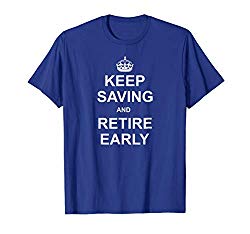
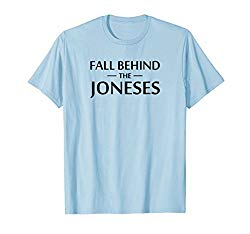
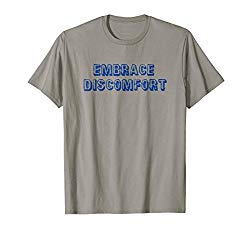

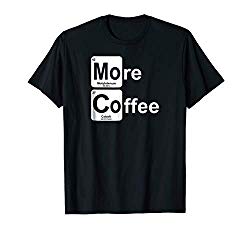

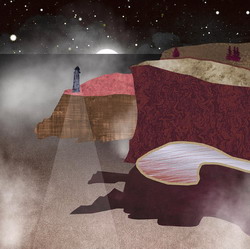


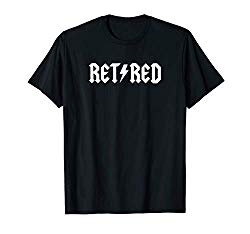





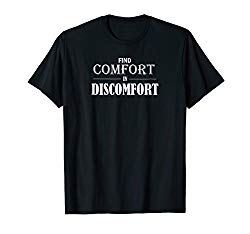


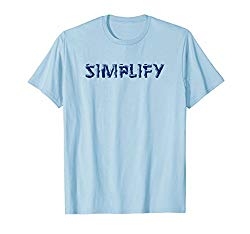


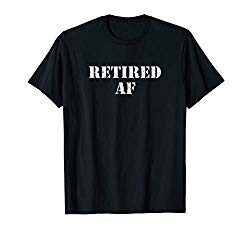
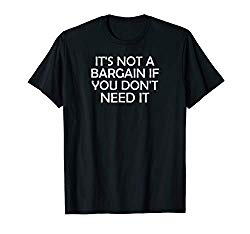











Love this post- thanks for all the great resources in one place. I’ve been obsessing over walkability score lately. Four years ago we moved from a house that had a 86 walkable score to a house with a score of 8, and I’ve been lamenting it ever since. What a great way to scope out an ideal new landing spot!
Glad you like it, these resources are great for scoping. It’s all about location 🙂
My property scores incredibly low on the walkability scale as pretty much everything requires a car to get to. I’m like your friend and have always tended to shy away from city living (rather have wide open spaces and nature). There are tradeoffs for both and you just have to pick what works best for you.
You sound like my best friend, and I have to admit the country has appeal
we have a score in the 80’s and you know i just wrote about buffalo. sidewalks are a big deal, if not the most efficient use of space. the stats don’t really tell you with the high score that the sidewalks aren’t always the easiest to navigate in winter with the freeze/thaw cycle. if we ever intend to move to a new area where we’re not very familiar i know we’ll be renting there first and have some boots on the ground before we leap.
a friend was over the other day asking about some restaurants in neighboring towns. my answer is always that i’ve never been to any of them. the rare night out is generally within 2 miles of home and we usually choose by walking distance. then you can have as much wine as you want and not worry.
I also live near a shit-ton of restaurants and haven’t been to most of them. Great minds.. 🙂
82 here. Who says nobody walks in LA? We get about a thousand trick-or-treaters each Halloween, which is a different sort of walkability index.
Thanks for linking to the ARCGis map–it’s fascinating. Our home rates as “above average walkable” there, though just a few houses away from a “most walkable” neighborhood.
Wow, great score for L.A. It isn’t all sprawl!
Mine is a 72! I live living in walkable/bikable neighborhooods but like you I don’t like it to be TOO urban. A girl needs her sleep…and some safety! I grew up in the suburbs of Detroit and knew that that kind of lifestyle was never for me.
Another great score for L.A.! I must not see these walkable places when I go out there
Our walkscore is 97. It’s awesome. We walk to the park, grocery stores, restaurants, library, and a lot more. It’s not too noisy here either.
I think you win the thread Joe, that’s pretty darn walkable
great post!
It’s a complex thing how you live and how you use transport/a car.
American seems to be built for cars but the UK/Europe is not – meaning here we have different problems.
If you can live without a car then you are well on your way to living a frugal but happy life – cars don’t bring that much happiness (and a lot of bills!)
And cars bring danger and death, let’s not forget that
My home’s walk score is actually only 48, but that’s not the whole story. We are a short walk to the grocery store, drug store, gym, a couple restaurants,and a few other stores, as well as all of the access to parks. We’re about a 0.7 mile walk to the bus, which is just enough to work as a backup. Really though, the grocery store and the park are huge ones, and they were on the list of must haves when we were looking at houses. You can have a crazy high walk score and still not have easy access to a grocery store!
Also – thanks for the ArcGIS link – that is a fabulous resource and one I think I’ll be digging into for work.
Same here… scored 54 but we are 20-30 min. walkable to 2 grocery stores, park & library; 20 min. to Bay Area Rapid Transit; 10 min. to drug store, restaurants and buses; and 5 minutes to access point for 20 miles of paved canal trails. And we have relative peace and quiet in a cul-de-sac. 🙂
Nice!
Yep, walk score definitely doesn’t tell the whole story.
GIS dorks (dorkettes?) unite!! And it sounds like you should be higher than 48 based off what you say. Or maybe the walks are short to you but too long to others/most
It’s also the lack of variety. We have one or two options versus many.
My home in SoCal gets a 15 walking score and a 0 transit score. That seems ridiculously low given that my ENTIRE neighborhood has sidewalks and bike lanes with a city bus stop about 2 blocks from my home (and the terrain is flat as a pancake; no hills or elevation changes). Also, there is a major shopping/dining/entertainment center less than half a mile away (VERY walkable/bikeable from my home with mature trees that shade the WIDE sidewalk all the way to the center).
Just for fun, I put in an address DIRECTLY ACROSS THE STREET from that major shopping center (Note: the shopping center contains about 15 restaurants, a major chain grocery store, a major chain drug store, a large movie theater, 3 banks, a dry cleaner, 4 salons, a medical plaza, and about a dozen clothing boutiques). There is a state college DIRECTLY next to this center (with TONS of green space open to the public, and is a major hub to the city’s bus system), as well as a dedicated bike path that runs over 20 miles along the nearby river. Finally, in addition to the college’s library, there is a public city library a 1/4-mile walk/bike down a well-shaded sidewalk.
This address got a walking rating of 59 (“Somewhat Walkable”), a Bike Score of 56 (“Bikeable”) and a transit rating of 36 (“Some Transit”).
Sorry, but the ‘Walk Score’ site doesn’t seem particularly trustworthy to me.
Who programs these things?
Yeah it sounds like their data is off for the area you’re talking about. I’m not affilated with them in any way but I can tell you that doing complex GIS like that is, well, complex. Especially when things are being built and closing all the time.
Woohoo! My city’s listed as #7! But I’m surprised we’re after LA, since we don’t have the sprawl that LA has. My neighborhood scores in the high 90s, since I walk everywhere.
I will say that I’ve been exploring some less urban areas and it’s so tough to give up walkability, but I would love a little less noise and a small backyard for my dog. Unfortunately, the areas that match this criteria are quite expensive. Walkability definitely comes with a price.
High 90’s is awesome. I figured you’d be high in Philly. The price of noise is a high one to me though, I’ve become less tolerant of it over time
My street gets an 8.
A little lower than I expected, but looking at the map and the What’s Nearby listings shows the limits of a tool like this.
The underlying Google database of businesses and amenities is really messed up. Home based businesses show up as grocery stores, addresses for places in the next town over show up near me, parks and schools are on the map but missing from the analysis.
The Travel Time Map tool looks pretty good. The Commute tool allows address to address time and distance calculations, but there’s no way to edit the routing. Their bike commute includes an unnecessary 250 ft hill climb for me because it follows the bus route.
Overall, it’s an interesting tool, but the score rating doesn’t really help me.
You are right about some of Google’s “business” data. I think when people register an LLC based out of their home on Yelp or something it pops up at the address, which is a house. So that throws things off. These tools are not perfect because mapping and GIS are really difficult and complex.
Our house is in a “very walkable” neighborhood and we specifically only looked at houses in older neighborhoods that had existing business centers. We don’t have a easily walkable grocery store (there are 4 at different 2 mile radii from our house) but there is a meat market and asian market just over a mile away but on the other side of the freeway and down a hill. One of my plans post full time work is to walk more. I prefer not to drive and often use my bike to get the 2 miles to restaurants or shops outside our neighborhood.
Sounds a like like my area actually
Wife and I are FI, and live in the DC area. Our neighborhood is very walkable, in Northern VA. 4-5 grocery stores within walking distance means we can buy the sales at each store and save a ton of money. Aldi, Harris Teeter, and 2 international grocery stores. The Metro system is also closely if we need it, but I avoid going downtown DC at all costs.
That being said, I wouldn’t mind moving to a lower cost of living area now. But have to consider the full picture, and having a walkable area is a great quality. In addition, entire area is connected via awesome trail/park layout. If I could find a similar area down South somewhere, and convince her to go, that would be great!
Thank you for the informative post! Wife and I have discussed this a lot lately!
Yes, we are pretty high COL, I’ve been here for a long time. But the job opportunities and salaries are abundant too. It’s a trade-off
82 Walk score and 96 bike score! Having never lived anywhere I could bike/walk from it’s a completely different experience. Salt Lake City downtown is a bit more expensive than you might expect, but you can still find a 1 bedroom apartment under $1,000 downtown if you don’t mind it looking a little dated (and doing laundry in a basement).
This is is one of the most attractive parts of geoarbitrage to me – getting a place with a high walk score for a cheap price. I’d love to be able to not drive, lyft or even bike and just live where my feet can take me.
Nice score dude! I wouldn’t expect anything less from SLC, I love it out there
Looks like a 74 where I live. And I do wish I had a grocery store closer to my house. That said, I have a lake not too far away where I can leave my house, walk around, and get back home in about 100 to 110 minutes. So I’m covered with what I care about; walking by a lake. 🙂
So you have a high lake score, and that’s a good thing 🙂
I just dug into my score and find it off and low in my opinion. Within 4 blocks of my house is every single service, health care, cafes, parks and more. We actually moved here on our FI journey because we could literally park the car for a month and not have to consider using it to get all of our monthly needs. Great article to bring awareness to others that might be looking to move, downsize and hopefully get outdoors more.
Really enjoyed this post! For most of our adult lives we lived in highly walkable areas but now live a bit more out in the country. While we like the peace and quiet we really really miss being able to get out and walk. I get super nostalgic whenever we go through a nice, walkable, tree lined street with a coffee shop or brew pub nearby.
Technically I’m only one mile from our town center, but our walk-ability score suffers horribly from a lack of walking paths or even bike lanes.
It’s a darn shame how unimportant walkability is to city planners. Everyone drives a car, so they just don’t worry about it.
Streets with no sidewalks drive me nuts. It’s as if they purposely said “people don’t have rights, only cars” when they built the street.